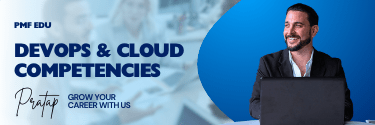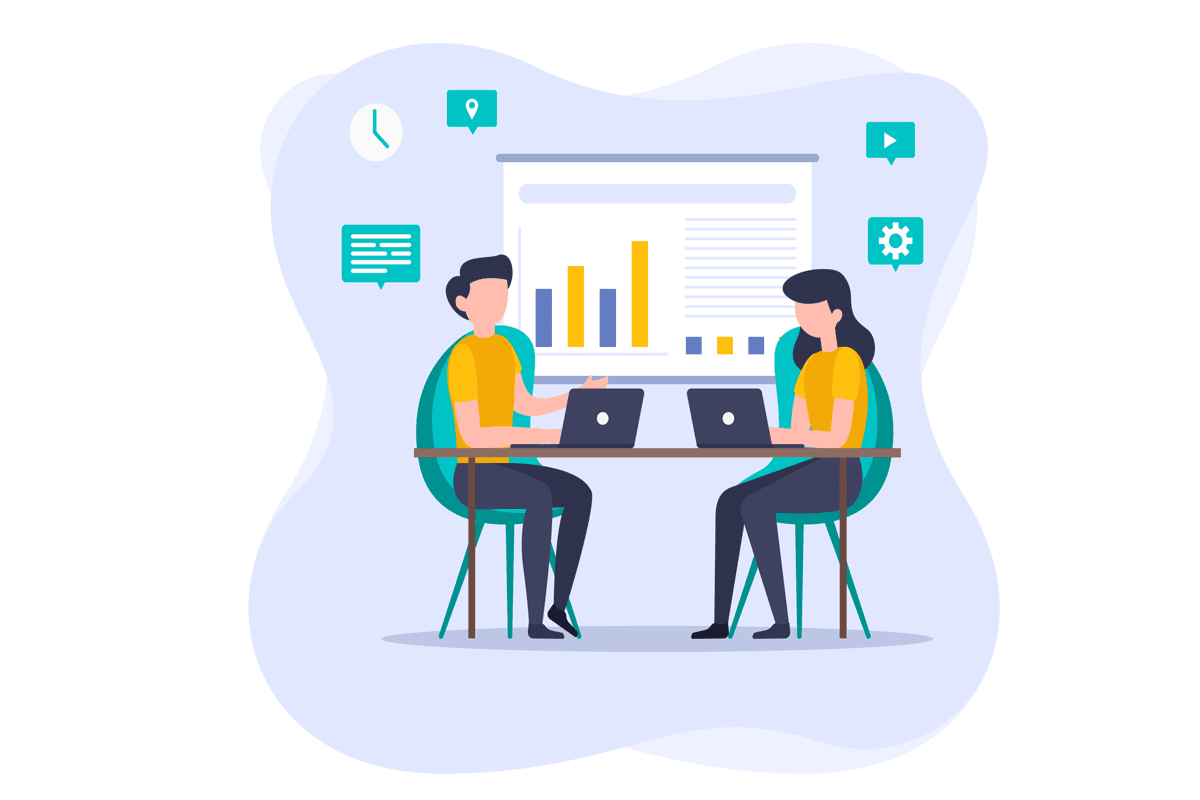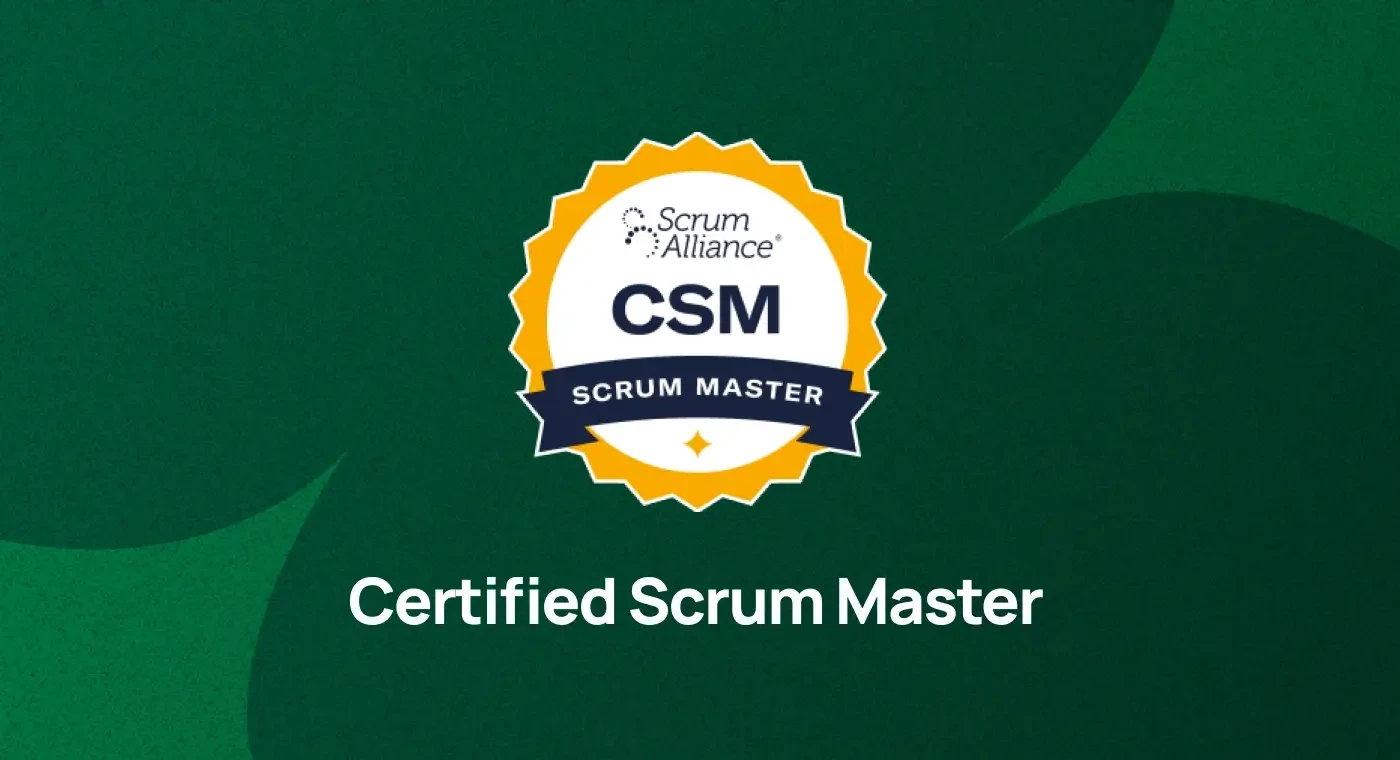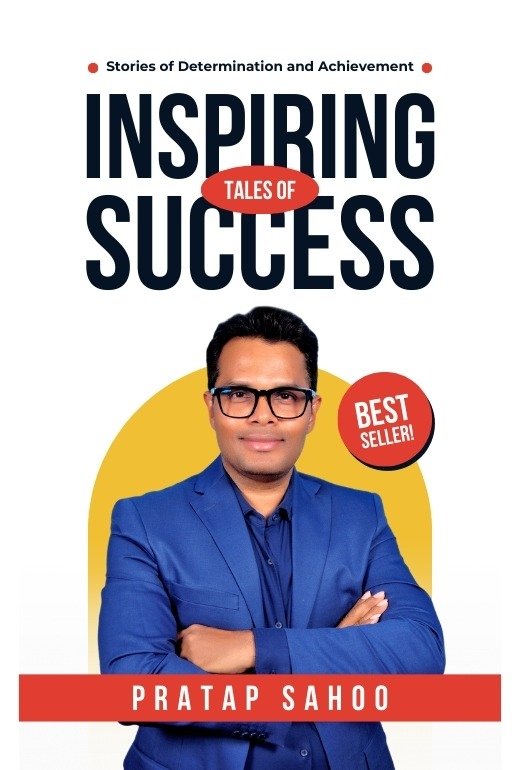Currently Empty: ₹0.00
Agile Management
Agile Coach Interview Questions and Answers
A product owner in Scrum team who is responsible for the outcome of the project. He maximizes the value of the product by managing and optimizing the product backlog. A product owner’s key responsibility is to define user stories and create a product backlog. No matter whether you are a beginner or an intermediate or an experienced product owner, this write-up will aid you in increasing your confidence and knowledge of product owner. The questions below are divided into various topics catering to product owner. They range from story grooming, user story splitting and estimation, burn down charts and more. Also, this guide provide step-by-steo explanations for every question which will help you understand the concepts well. With Product Owner interview questions, you can be confident about your preparation for the upcoming interview.
Question 1-5
1. What is the role of an Agile Coach?
An Agile Coach guides teams, individuals, and organizations in adopting Agile practices and improving Agile maturity.
2. What is Agile?
Agile is a mindset and a group of methodologies that promote iterative development, customer collaboration, and adaptability to change.
3. What is the Agile Manifesto?
A set of four values and twelve principles that guide Agile practices, focusing on individuals, collaboration, customer satisfaction, and responding to change.
4. Name the four values of the Agile Manifesto.
Individuals and interactions over processes and tools
Working software over comprehensive documentation
Customer collaboration over contract negotiation
Responding to change over following a plan
5. What are some common Agile frameworks?
Scrum, Kanban, SAFe, LeSS, Nexus, XP, and Disciplined Agile.
Question 5-10
6. What is Scrum?
A lightweight framework for Agile development with roles, events, and artifacts that support iterative and incremental delivery.
7. What is the role of a Scrum Master?
A servant leader who removes impediments, facilitates ceremonies, and ensures the team follows Agile principles.
8. What is a Product Owner?
The person responsible for defining and prioritizing the product backlog to maximize value delivered by the team.
9. What is the difference between Agile and Scrum?
Agile is a mindset; Scrum is one specific framework that implements Agile principles.
10. What is a Sprint?
A time-boxed iteration (usually 1-4 weeks) where a team delivers a potentially shippable product increment.
Question 10-15
11. What is a user story?
A simple, informal description of a software feature written from the user’s perspective.
12. What is a backlog?
A prioritized list of tasks, features, or requirements waiting to be worked on.
13. What is velocity?
The amount of work a team completes in a sprint, often measured in story points.
14. What is a burn-down chart?
A visual representation of work left to do versus time remaining in a sprint.
15. What is a retrospective?
A ceremony held at the end of each sprint to reflect on what went well, what didn’t, and how to improve.
Question 15-20
16. What is a daily stand-up?
A 15-minute team meeting where members share progress, plans, and blockers.
17. What does an Agile Coach do day-to-day?
Facilitates training, mentors teams, helps resolve impediments, and advises leadership on Agile practices.
18. What is T-shaped skillset?
A person with deep expertise in one area and general knowledge across multiple disciplines.
19. What is continuous improvement in Agile?
Ongoing efforts to improve products, processes, and team performance.
20. What is an MVP (Minimum Viable Product)?
The simplest version of a product that delivers value and can be validated with customers.
Question 20-25
21. What is empirical process control?
Making decisions based on observation, experimentation, and adaptation.
22. What is a definition of done (DoD)?
A shared agreement on what constitutes a complete task or product increment.
23. What is timeboxing in Agile?
Allocating a fixed time for an activity to encourage focus and efficiency.
24. What is the INVEST model for user stories?
Independent, Negotiable, Valuable, Estimable, Small, Testable.
25. What is a Kanban board?
A visual tool to track work items and manage flow across stages.
Question 25-30
26. What is WIP limit?
A constraint on the number of tasks in progress to improve flow and reduce multitasking.
27. What are Agile ceremonies?
Events like Sprint Planning, Daily Scrum, Sprint Review, and Retrospective.
28. What is pair programming?
Two developers work together at one workstation to improve code quality and learning.
29. What are Agile roles?
Scrum Master, Product Owner, Agile Team, and in scaled environments, RTEs and Coaches.
30. What is test-driven development (TDD)?
A practice where tests are written before code to drive design and ensure quality.
Question 30-35
31. What is the Agile mindset?
A way of thinking that embraces flexibility, collaboration, customer focus, and incremental improvement.
32. What is the goal of Agile transformation?
To improve an organization’s adaptability, speed to market, and customer satisfaction.
33. How does Agile handle change?
Agile welcomes changing requirements, even late in development.
34. What is a spike in Agile?
A time-boxed investigation or research activity.
35. What is backlog grooming (refinement)?
The process of reviewing and updating backlog items for clarity and priority.
Question 35-40
36. What is a feature in Agile?
A service that fulfills a stakeholder need, often composed of multiple user stories.
37. What is a cross-functional team?
A team with all skills necessary to deliver value from concept to deployment.
38. What is servant leadership?
A leadership style that emphasizes the growth and well-being of the team.
39. What is a retrospective format you like?
Start-Stop-Continue, 4Ls (Liked, Learned, Lacked, Longed For), or Mad-Sad-Glad.
40. What is Agile release planning?
Planning how and when product increments will be released to customers.
Question 40-45
41. What is story mapping?
A visual technique for organizing and prioritizing user stories based on user journeys.
42. What are personas in Agile?
Fictional characters representing target users to guide product design.
43. What is technical debt?
Work left undone that may compromise system integrity and increase future effort.
44. What is Agile estimation?
Assessing the relative size or complexity of user stories using methods like story points.
45. What are story points?
Relative units of measure for the effort required to complete a user story.
Question 45-50
46. What is Scrum of Scrums?
A scaled event where representatives from multiple teams coordinate work and dependencies.
47. What is Agile scaling?
Extending Agile practices beyond teams to programs, portfolios, and entire organizations.
48. What is an impediment?
Anything blocking team progress that needs resolution.
49. What’s the difference between Agile and Waterfall?
Agile is iterative and incremental; Waterfall is linear and sequential.
50. What is business agility?
The ability of an organization to respond rapidly and effectively to change.
Question 1-5
1. How do you assess the Agile maturity of a team or organization?
By observing team behaviors, reviewing metrics, conducting surveys, maturity models, and performing Agile health checks.
2. How do you tailor Agile coaching for different teams?
By understanding their context, current maturity level, goals, and customizing practices without violating Agile principles.
3. What do you do if a team resists Agile adoption?
Build trust, listen to concerns, identify pain points Agile can solve, show early wins, and involve leadership support.
4. How do you coach leadership in an Agile transformation?
Educate on Agile values, model servant leadership, align strategic goals, and involve them in change initiatives.
5. What is the difference between Agile coaching and Agile training?
Training imparts knowledge; coaching enables application, behavior change, and ongoing improvement.
Question 5-10
6. How do you handle command-and-control managers in Agile environments?
Use empathy, show value of empowerment, encourage experiments, and influence through results.
7. How do you resolve conflicts between Scrum Masters and Product Owners?
Facilitate a conversation, clarify roles and responsibilities, and align them on common goals.
8. What techniques do you use to coach distributed Agile teams?
Use visual collaboration tools, reinforce team norms, ensure timezone-friendly ceremonies, and focus on async communication.
9. What KPIs do you track to measure Agile success?
Team velocity, sprint predictability, cycle time, lead time, team health, and customer satisfaction.
10. How do you deal with Agile teams not delivering committed work?
Discuss causes during retrospectives, improve estimation, address scope creep, and promote sustainable pace.
Question 10-15
11. What’s your approach to Agile transformation roadmap?
Assess current state, define goals, plan incremental steps, train stakeholders, and inspect and adapt regularly.
12. How do you facilitate cultural change during Agile adoption?
Model values, celebrate Agile behaviors, involve influencers, and reinforce feedback loops.
13. How do you scale Agile in large organizations?
Use frameworks like SAFe, LeSS, or Spotify model depending on context, and ensure alignment at every level.
14. How do you coach teams on estimation techniques?
Introduce story points, planning poker, affinity mapping, and triangulation with past data.
15. How do you address role confusion in new Agile teams?
Conduct role clarification workshops, reinforce through training, and coach one-on-one if needed.
Question 15-20
16. How do you facilitate a team kickoff for new Agile teams?
Establish working agreements, clarify roles, define the Definition of Done, and align on goals.
17. What is your approach to retrospectives in high-stress teams?
Create psychological safety, start with positives, use structured formats, and promote continuous improvement.
18. How do you coach teams that are only "doing Agile" and not "being Agile"?
Highlight values over mechanics, encourage self-reflection, and guide towards mindset shifts.
19. How do you build coaching credibility with technical teams?
Understand their domain, show empathy, provide value through insights, and never dictate from authority.
20. What do you do when teams continuously miss sprint goals?
Analyze root causes, coach on planning, right-size stories, and promote realistic commitments.
Question 20-25
21. What is empirical process control?
Making decisions based on observation, experimentation, and adaptation.
22. What is a definition of done (DoD)?
A shared agreement on what constitutes a complete task or product increment.
23. What is timeboxing in Agile?
Allocating a fixed time for an activity to encourage focus and efficiency.
24. What is the INVEST model for user stories?
Independent, Negotiable, Valuable, Estimable, Small, Testable.
25. What is a Kanban board?
A visual tool to track work items and manage flow across stages.
Question 25-30
21. How do you coach non-IT teams like HR, Finance, or Marketing?
Map Agile to their workflows, focus on flow and collaboration, and use Lean and Kanban where appropriate.
22. What is the Coaching Arc?
A framework outlining the journey: contracting, discovering, guiding, supporting, and evaluating.
23. How do you integrate Agile with compliance-heavy environments?
Balance documentation needs with Agile principles, use just-enough processes, and automate audits where possible.
24. How do you balance coaching multiple teams simultaneously?
Prioritize based on maturity, needs, and impact, and empower Scrum Masters for day-to-day coaching.
25. How do you use metrics without creating a command-control atmosphere?
Use metrics for learning, not punishment; focus on trends, not absolutes.
Question 30-35
31. How do you mentor Product Owners?
Coach on stakeholder engagement, backlog prioritization, value delivery, and user feedback loops.
32. What’s your approach to cross-team dependencies?
Identify during planning, visualize with dependency boards, and manage through coordination events.
33. How do you coach on Agile budgeting and forecasting?
Introduce Lean budgeting concepts, MVPs, and align funding to value streams.
34. What is your approach to Agile in hardware or embedded teams?
Use longer iterations, integrate with mechanical testing cycles, and adapt Agile to fit hardware constraints.
35. How do you help teams overcome burnout or low morale?
Encourage psychological safety, celebrate wins, reassess workload, and prioritize rest.
Question 35-40
36. What’s the role of storytelling in coaching?
It helps connect, simplify complex ideas, and inspire change through relatable experiences.
37. How do you facilitate cross-functional Agile workshops?
Use interactive formats, breakout groups, timeboxing, and ensure clear goals and follow-ups.
38. How do you coach Agile mindset in leadership?
Help them model behaviors, shift from control to empowerment, and align incentives to Agile principles.
39. How do you coach a team going through conflict?
Create space for safe discussion, use techniques like “ladder of inference,” and coach on empathy and listening.
40. How do you coach innovation within Agile teams?
Promote experimentation, empower IP iterations, and create space for ideation and prototyping.
Question 40-45
41. How do you facilitate Agile health assessments?
Use surveys, interviews, team self-assessments, and compare results over time for continuous improvement.
42. What is value stream mapping?
A Lean tool that visualizes steps to deliver value and highlights waste and delays.
43. How do you use system thinking in Agile coaching?
By looking beyond symptoms to root causes and understanding team behavior in the organizational context.
44. What is coaching stance?
The mindset and presence a coach holds — non-judgmental, curious, and client-centered.
45. What is the difference between mentoring and coaching?
Mentoring gives answers based on experience; coaching helps clients find their own answers.
Question 45-50
46. What is your coaching toolbox?
Includes assessments, facilitation formats, coaching models (GROW, CLEAR), visual tools, and Agile frameworks.
47. How do you keep your coaching skills up to date?
Attend workshops, join communities, seek supervision, read, and continuously coach.
48. How do you deal with “fake Agile”?
Highlight gaps, use metrics and principles to challenge behaviors, and encourage transparency and learning.
49. What are Agile anti-patterns you've observed?
Command-control behavior, skipping retrospectives, waterfall disguised as Agile, and estimating in hours.
50. What’s your coaching philosophy?
Example: “Meet people where they are, respect their journey, and guide them toward sustainable agility.”
Question 1-5
1. How do you navigate complex organizational resistance during an Agile transformation?
By identifying systemic root causes, aligning transformation goals with business outcomes, engaging change champions, and applying Kotter’s 8-step change model or ADKAR to manage resistance strategically.
2. What is your approach to coaching an executive leadership team unfamiliar with Agile?
Begin with empathy and context, offer executive-specific workshops, demonstrate Agile’s business impact, and provide coaching aligned with their language (e.g., OKRs, ROI, strategic planning).
3. How do you measure the success of your Agile coaching engagements?
Use qualitative and quantitative indicators: improved time-to-market, increased employee engagement, higher customer satisfaction, Agile maturity assessments, and feedback from coachees.
4. Describe a situation where an Agile transformation failed or stalled. What did you learn?
Example: Leadership support was lacking and Agile was treated as a process change only. Learned that mindset shifts and cultural transformation are foundational for success.
5. What’s your strategy for aligning Agile with enterprise-level strategy and portfolio management?
Facilitate Lean Portfolio Management practices, map value streams, enable cross-functional collaboration, and ensure objectives flow from strategic vision down to team execution.
Question 5-10
6. How do you approach building a coaching culture within an enterprise?
Train internal coaches, create coaching communities of practice, model coaching behaviors, and embed coaching into leadership development programs.
7. How do you coach multiple agile frameworks across different departments?
Respect context, apply principles over practices, align with overarching Agile values, and find common alignment points (cadence, flow, feedback).
8. How do you apply systems thinking to drive large-scale Agile adoption?
Visualize the end-to-end system using causal loop diagrams or value stream maps, identify bottlenecks, and use leverage points to enable change without local optimizations.
9. How do you influence senior leaders to prioritize agility over predictability?
Use real-world data and case studies, show how agility supports faster value delivery and risk reduction, and align Agile with business metrics (e.g., NPS, OKRs).
10. How do you balance coaching individual teams while aligning with enterprise goals?
Set up dual loops of learning: tactical (team-level) and strategic (enterprise-level), and act as a translator between team insights and enterprise ambitions.
Question 10-15
11. What techniques do you use to shift from a project-centric to a product-centric mindset?
Coach on product thinking, establish persistent teams, align to customer journeys, and focus on continuous discovery and delivery over project milestones.
12. How do you assess whether Agile ways of working are truly embedded?
Look for behavior change, decentralized decision-making, continuous improvement habits, and visible flow of value — not just process compliance.
13. What is your approach to psychological safety in high-stakes environments?
Model vulnerability, encourage honest feedback, establish team norms, and facilitate retrospectives that surface unspoken issues safely.
14. How do you drive innovation in Agile organizations that are risk-averse?
Create safe-to-fail experiments, leverage Innovation and Planning (IP) iterations, encourage MVPs and hypothesis-driven development, and normalize learning from failure.
15. How do you handle teams gaming Agile metrics?
Shift the focus from vanity metrics to actionable insights, educate on the purpose of metrics, and co-create healthy KPIs with teams.
Question 15-20
16. How do you scale Agile in an organization with multiple vendors or offshore teams?
Define clear integration points, use common cadences, align on goals and values, implement scaled events (e.g., PI Planning), and ensure collaborative tooling.
17. What frameworks or models do you apply for enterprise coaching?
Lean Change Management, Agile Fluency Model, SAFe, LeSS, OCM models, and ICAgile’s Coaching Competency Framework depending on the context.
18. How do you approach coaching a failing Agile Release Train or Value Stream?
Diagnose systemic issues (alignment, flow, leadership), revisit team charters, re-establish backlog quality and vision, and reconnect delivery to customer value.
19. How do you mentor other Agile Coaches?
Offer shadowing opportunities, feedback loops, reflective practice, regular 1:1s, and introduce coaching supervision practices.
20. How do you handle toxic team behaviors or dysfunction at scale?
Diagnose using tools like Lencioni’s 5 Dysfunctions model, establish psychological safety, facilitate team coaching sessions, and involve HR or leadership when needed.
Question 20-25
21. What is your Agile leadership coaching framework?
Combine frameworks like Agile Leadership Journey, Leadership Circle Profile, or LAL (Leading Agile Leaders), focusing on mindset, behavior, and systems.
22. How do you integrate diversity, equity, and inclusion (DEI) into Agile coaching?
Design inclusive ceremonies, challenge bias in team dynamics, coach leaders on psychological safety, and encourage diverse representation in decision-making.
23. How do you use enterprise agility tools (e.g., Jira Align, AgilityHealth)?
Use them for visibility into flow, alignment across portfolios and ARTs, capturing team health, and guiding enterprise retrospectives.
24. How do you coach around strategic agility and not just team agility?
Facilitate executive workshops, link Agile to market responsiveness, drive OKR adoption, and advise on customer-centric strategy pivots.
25. What is your long-term Agile coaching philosophy?
Example: “Agile isn’t the goal — it’s a path to better outcomes, stronger teams, and a more humane workplace. I aim to leave behind systems that can thrive without me.”
Description
The Product Owner is a pivotal role in an Agile team, serving as the primary liaison for stakeholder needs and representing the team’s goals and progress. They are solely accountable for maintaining the quality and value of the team’s output and own the responsibility for managing the product backlog.
Demand for skilled Product Owners is strong across industries. A quick look at job postings shows top companies actively seeking candidates for this role. Currently, there are over 300 open Product Owner positions on LinkedIn in Spain alone. Research indicates that the average annual salary for a Product Owner in the United States is around $105,158, while in India, the average salary is approximately ₹9,97,286 per year, according to Indeed.

